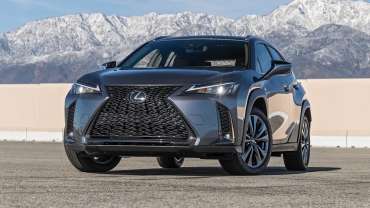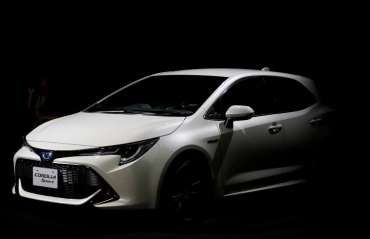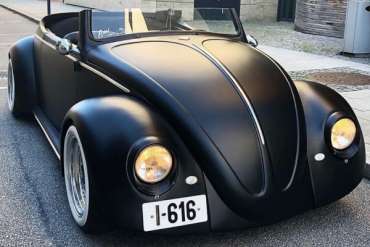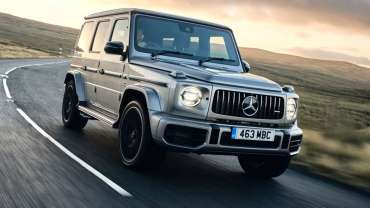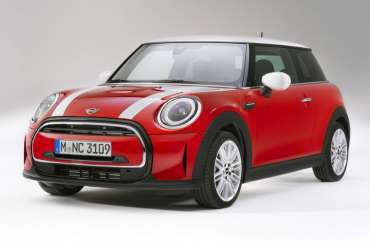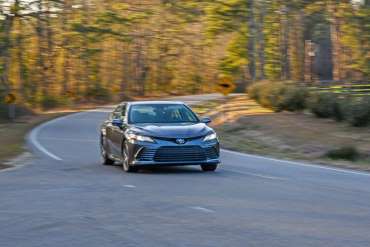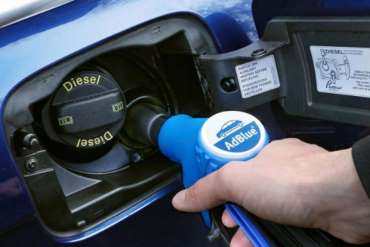
Worldcarblog.com
2021 Lexus UX200 F Sport First Test: Experience or Appliance?
This compact luxury crossover isn’t the user experience we were hoping for.
Your phone, laptop, smartwatch, heck, even your smart speakers are all a massive pain in the neck. Not for you, but for the people who made them. User experience and interface designers agonize over products for months or even years to deliver an intuitive user experience, and you always notice when they haven't. It's the same story for cars like the 2021 Lexus UX200 F Sport.
Engineers spend countless hours working through endless permutations of designs so they can get the little things like the detent on that volume knob just right. It's all part of an endless quest to satisfy the user. So when we see the letters "U" and "X" arrive emblazoned on the rump of a small subcompact luxury Lexus SUV, the expectation is a satisfying user experience. The only problem is that isn't quite what the Lexus UX200 delivers.
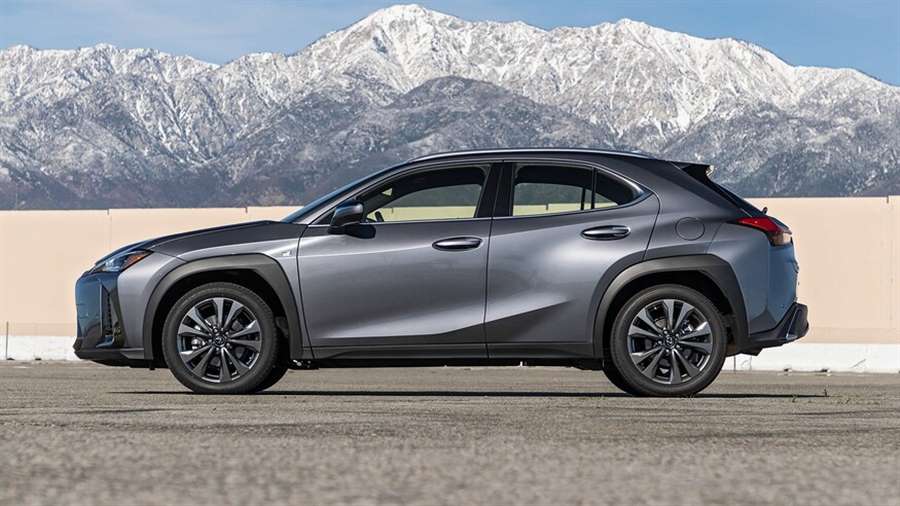
This miniaturized SUV belies both the quality and the satisfaction a Lexus badge normally promises, and the problems start with the UX's pee-wee powertrain. Its 2.0-liter I-4 makes 169 hp and 151 lb-ft of torque, which makes the Lexus one of the slowest vehicles we tested in 2020. At 8.9 seconds to 60 mph, it's slower than much less expensive compact SUVs such as the Mazda CX-30, the base Kia Seltos, and even the Hyundai Venue SEL (which makes 48 hp less).
Sometimes a car feels quicker in the real world than its test numbers would leave you to believe. Sadly, that's not the case here. The UX feels just as breathless on the road as it is on the dragstrip. Merging onto freeways or passing on open roads demands you bury your right foot into the carpet. At that point, the little four-banger shoots to its 6,600-rpm redline and stays there in a perpetual shriek that's about as enjoyable as using a sandpaper Q-tip.
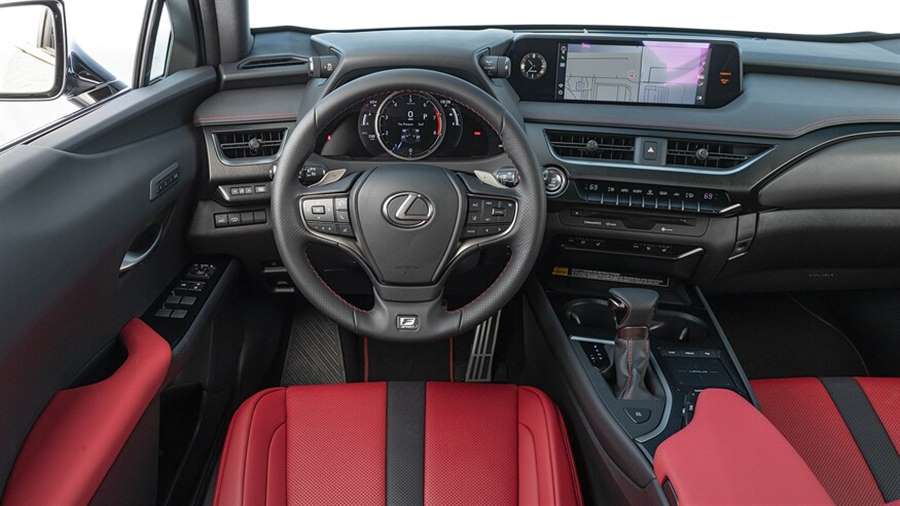
There are no two ways about it: This is a slow car, and despite the F Sport badge, there's little redemption when the going gets twisty. The UX's all-season tires give up grip quickly, and its 27.9-second figure-eight time at a 0.60 g average rank it near the bottom of all the vehicles we tested last year. The Mazda CX-9, a proper three-row SUV that weighs three-quarters of a ton more than the UX, logged a faster lap and a higher average g than the Lexus managed.
As for the UX, road test editor Chris Walton found the steering reasonably precise at the limit but bemoaned the UX's "10-speed" CVT, saying it was "slow to respond and kick down to a proper ratio." The transmission doesn't have "gears," as such, but it emulates a number of simulated ratios, and for most of my driving the CVT was in too low of a "gear," even in Normal mode. I resorted to putting the car in Eco mode for the majority of my driving just to keep the revs down and the engine-sound out of the cabin.
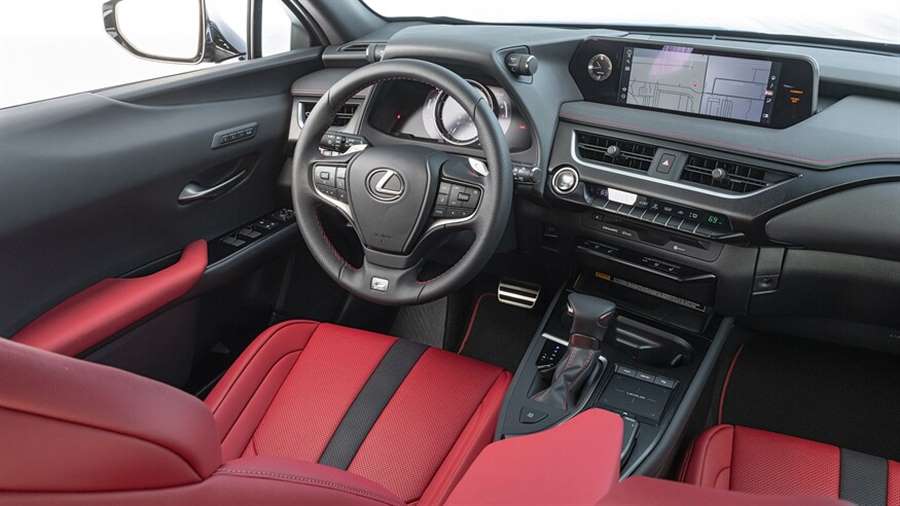
We noted issues with the throttle map on the previous UX we tested, but some software changes to the 2021 model have, thankfully, made the throttle response more linear and easier to modulate. Dynamically, though, that's the solitary bright spot for the UX, and it's not a particularly praiseworthy one.
Thankfully, the ride provides some relief from the lackluster powertrain of the Lexus. Over small lumps and fissures in the road, the UX can be crashy, but all in all, it rides well over most any surface and is more comfortable than rivals such as the Mercedes GLB and Jaguar E-Pace. A big part of that comfort is down to the excellent F Sport seats. They're supportive, heated, cooled, and trimmed in a luscious leather that makes spending time in them the best part of the whole car.
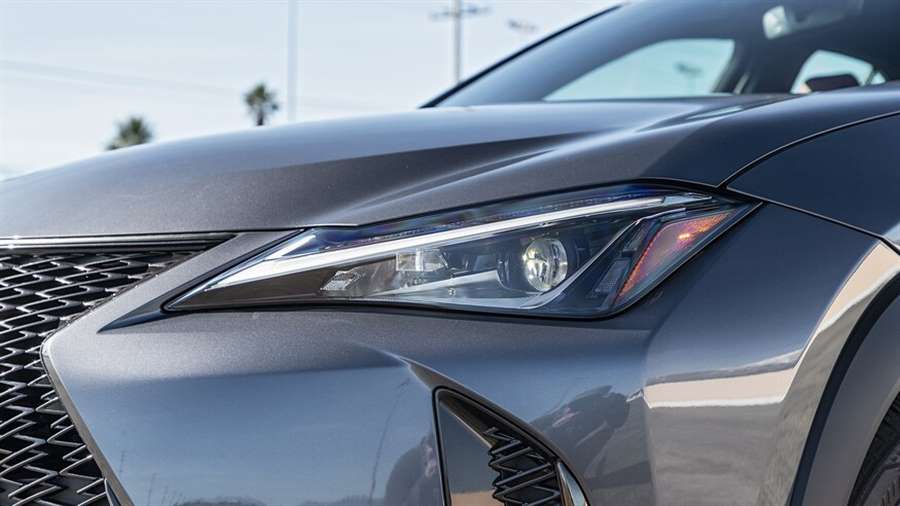
The rest of the interior, on the other hand, is largely where the user experience falls flat. One example: Just beneath the crisp, bright infotainment display is a well-organized row of HVAC buttons, but the option to turn the A/C on and off is buried under three menus. Plus, Lexus' finicky touchpad makes getting there difficult. Even after Lexus spent years refining and iterating on the system, it still isn't as intuitive or as accurate as the control knob offered by much of the German competition.
The volume knob is located on a funky, flat spar that juts out from the center console. It's supposed to be easy to use if your hand is resting on the lid of the console itself, and it's not necessarily a problem on its own. But once you have a passenger and their elbow takes up the exact position your arm needs to be in to use the volume knob properly, the illusion that this is somehow more intuitive or more interesting than a typical volume knob falls apart. That and the rest of the physical controls located on that spar become unusable.
The steering wheel is much too large for a car of this size, and even though the column is electrically powered, it doesn't telescope out far enough. The bit of plastic at the top of the instrument cluster creaked incessantly in our test car, and the screen resolution in the cluster itself doesn't hold a candle to the likes of Mercedes' MBUX and Audi's Virtual Cockpit. And then there's the excessive wind buffeting—even with both driver-side windows down, there's a literal tornado whipping around in the back of the cabin. You can mitigate it by lowering the rear passenger's side window, but at that point, you might as well be driving a convertible.
The rear cargo area only has 17 cubic feet of free space available (that's less than a Hyundai Veloster), and there's a middling amount of legroom and headroom available to second-row passengers. Now, I know what you're thinking. Here comes Johnny Auto Journalist, picking apart yet another SUV because we are taught to hate them. But you'd be wrong. There are plenty of SUVs, compact or otherwise, that we genuinely love.
On its face, the UX200 should be an appliance, a generalist automobile that takes you from A to B without hassle. Like your smartphone, it should be pleasant to use when you need it to be and out of your way when you don't. Lexus' quest to make it an "experience" with its, erm, eye-catching exterior looks and fussy interior design has only packed it full of compromise.
The user experience that I talked about earlier, the one that designers and engineers fret over, the one that separates good products from bad ones, simply doesn't excel here. The UX is inconvenient at its best and downright irritating at its worst, and for $41,655 there is no way to justify it.
Source: motortrend.com
Toyota sold the most cars in 2020, overtaking Volkswagen
Toyota sold the most cars in 2020 and overtook Volkswagen from the first place in the world ranking list, it was announced at the headquarters of the Japanese company in Tokyo.
Last year, Toyota sold 9.528 million cars worldwide, which is 11.3 percent less than in 2019, but it still overtook Volkswagen, because the German manufacturer sold 9.305 million cars, which is a drop of 15.2 percent, Reuters reported.
Last year, due to the coronavirus pandemic, sales of new cars were significantly reduced in all countries, and Toyota coped with it somewhat better because Asia coped much better with the pandemic than Europe and especially the United States.
Toyota states that they achieved better results than the competition, partly due to the larger offer of increasingly sought-after electric cars. Of the 9.528 million vehicles sold in 2020, 23 percent were electric, which is three percent more than in 2019.
An interesting restoration of the classic "Beetle" from 1961
When we think of the beetle models from the sixties, we mostly get a picture of small bright cars with a retro vibe, in a wide range of pastel tones ...
However, one designer and fan of the Volkswagen Beetle car, Danny Kordal, gave his special model "Beetle" a very interesting transformation by turning it into a James Bond car, or something that belongs to the Batman franchise.
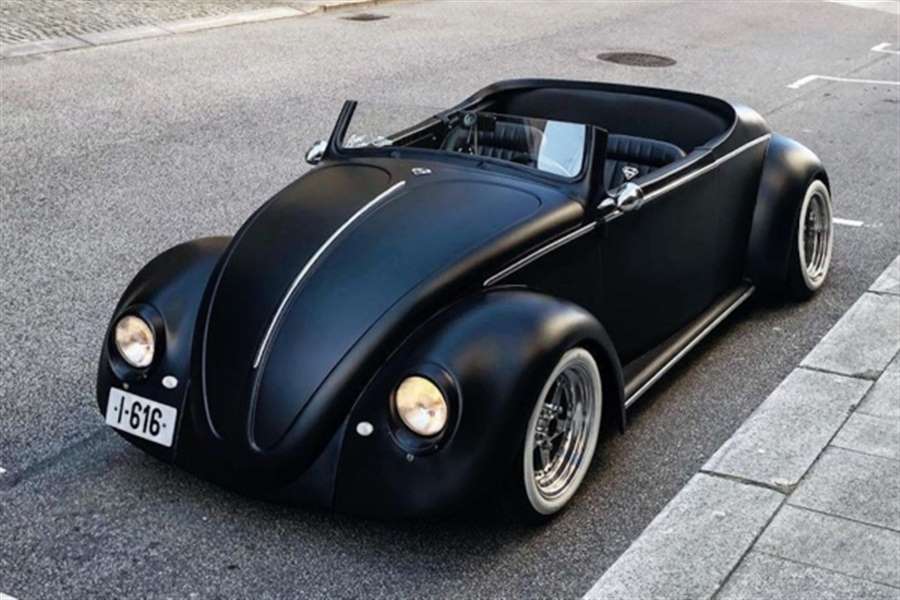
The 1961 model is painted matte black and has a flexible roof construction, which turns it into an open convertible. Kordal tuned the windshield as well, to complete his minimalist design. By removing the round lines of the car, including the side windows, together with the rear windshield, the owner created a slightly more square appearance of his torpedo-like bug.
Additionally, this beetle was lowered to the height of a standard hot rod model, followed by chrome details on each side in an outstanding combination. Even the interior of this model has been completely redesigned and finished with rich black, luxurious tonal leather seats and essential details.
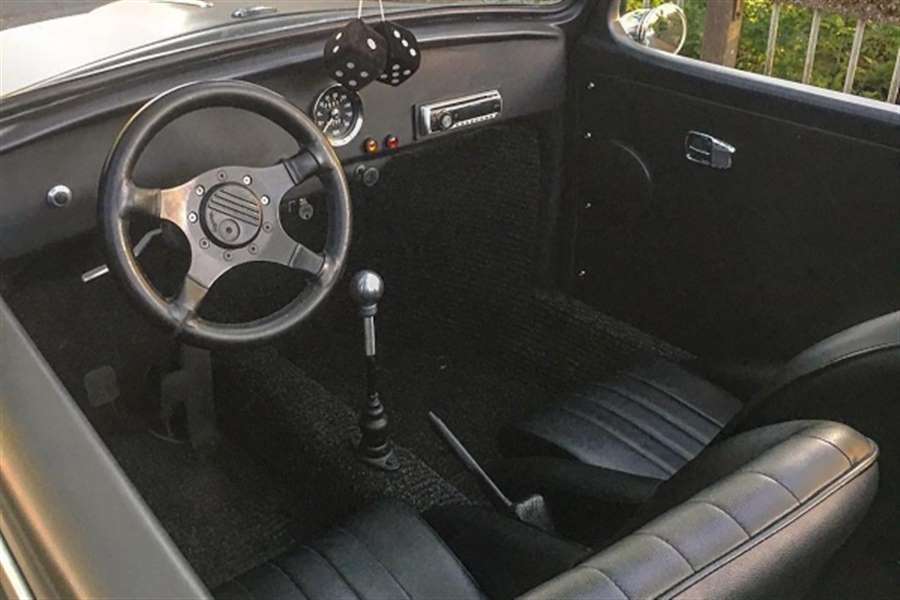
Whether driving around the city or simply traveling on the open roads of rural areas, this vehicle attracts great interest of everyone who happens to be next to it, and with its unique and powerful appearance it leaves a very strong impression wherever it appears.
Mercedes-AMG G63 (2021) review: excess all areas
‘The old G-Class was a second or third car for most customers,’ Gunnar Guethenke (unsurprisingly nicknamed ‘Mr G’ as the head of Mercedes-Benz’s off-road division) told us back in 2018. ‘With the new model, we think it is a viable only car.’
That was a very big claim to make. Having tested one abroad and in the UK, though, we’re inclined to agree.
This G-Class represented the biggest shake-up in the model’s 40-odd-year history; the W463 model we all know and quietly admire had been on sale from 1990 until 2018. While there’s been little arguing about the streetside posing and rap-attack creds of the outgoing G, it drove, packaged and wobbled like a car knocking on the door of its 30th birthday party.
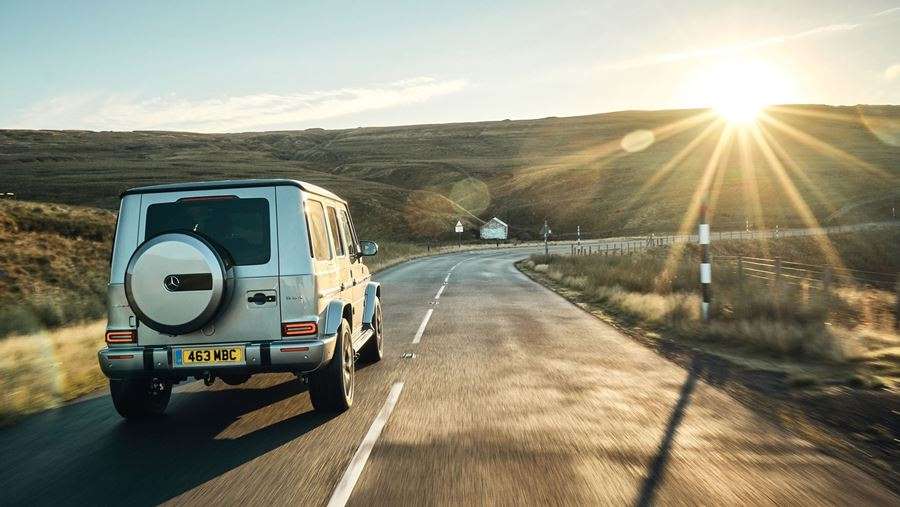
Here, we test the all-out AMG G63 variant.
What has changed with the latest G63?
Almost everything. Only three parts are carried over: the headlamp washers, the push-button door handles and the giant spare wheel cover bolted to the rear tailgate.
It’s still based around a sturdy (but new) ladder-frame chassis, built like steel girders to support a nearby suspension bridge more than a rich person’s plaything. Off it are hung steel and aluminium body panels, cleverly designed for maximum stiffness and a little less weight (mass falls by around 170kg, to a still-portly 2.5 tonnes).
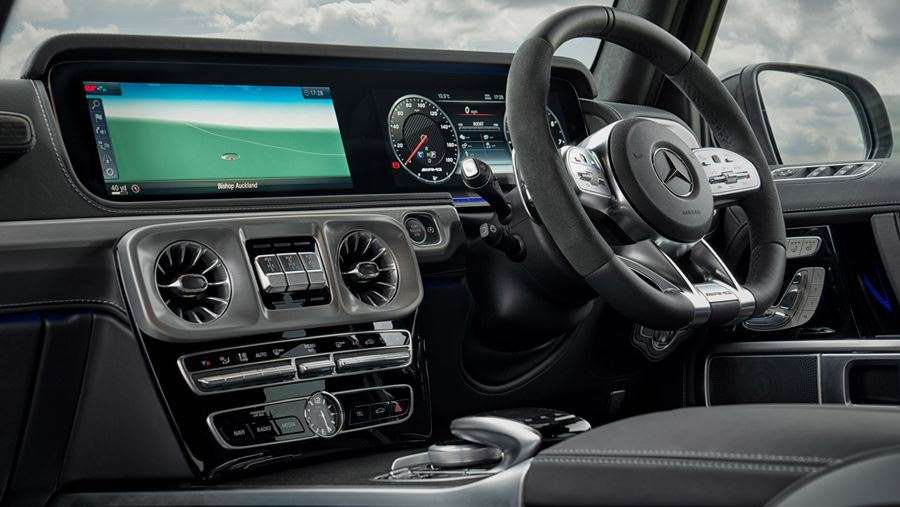
Much of that heft is attributed to the serious off-roading hardware; the new Mercedes-Benz G-Class range comes as standard with three fully locking differentials (one at each axle and a central clutch, to maintain traction in all conditions) and a low-speed transfer box. Daimler claims this provision is unique among off-roading brethren.
Climb aboard the new G and you won’t confuse old and new cabins. The old G-Class had a woefully cramped passenger compartment; your elbows felt pinched by the door cards, rear-seat passengers had nowhere to put their feet and the instruments and electrical architecture reflected the Betamax generation from which they hailed.
The new car is bigger, for starters: 53mm longer and 64mm wider, for superior packaging. It shows – even full-sized adults will be comfy in either row, and the rear bench can accommodate two, or even three, grown-ups thanks to thinner front seats and an impressively almost flat floor. The boot is an adequate 454 litres, pinched by the sub-woofer on the left and fuel tank on the right. Access it via the mother of all side-hinged, heavy tailgates which now locks into place at any extension so it won’t blow shut in a high wind.
Most striking of all is the E-class instrumentation that’s transformed the dashboard: giant twin 12.3in digital displays are standard in UK models (elsewhere you can order retro physical dials, should you fancy) and all the latest Merc trickery is present and correct. So you can now enjoy Apple CarPlay to sync your phone, skip around the menus using wheel-mounted thumb trackpads and there’s even a wifi hotspot. On a G-wagen!

Oh, and there’s still a sturdy grab handle in front of the passenger, as a permanent reminder that this car is still all about scaling serious inclines more than the next playlist.
What’s the AMG G63 like to drive?
You quickly sense how thorough this overhaul is. The G might look incredibly similar from outside, all the way down to those faux rain gutters and sturdy exposed hinges that riff on the G aesthetic, but it’s essentially very modern.
This full-monty AMG G63 which brings the mother of all twin-turbo 4.0-litre V8s with a faintly ludicrous 569bhp and 627lb ft all the way from 2500-3500rpm. There’s also a G350d available in the UK, which we’ve ran as a long-termer.
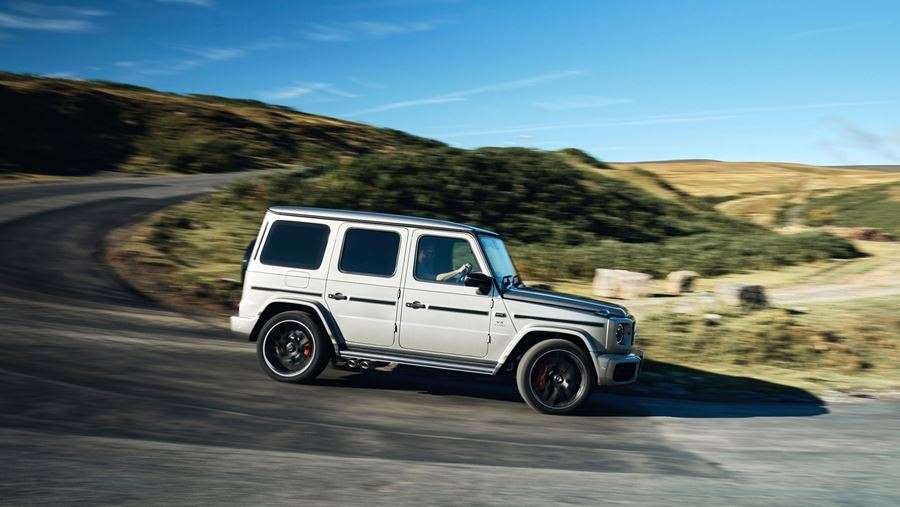
The AMG G63 So it’s neck-snappingly quick, with 0-62mph in a claimed 4.5sec and you can derestrict it up to 149mph if you’re feeling especially brave. Performance is accompanied by the rudest of V8 blare, exaggerated in Sport mode to bounce off walls and draw even more attention than the set-square boxy G-Class already musters.
The old one was fast, too, but felt like it was about to hurl you off the road at the first sign of a corner or bump. The new chassis delivers a quantum leap in ride and handling, soaking up the majority of road scars and – praise be! – delivering something approaching steering response and feel.
Thank the new electric rack and pinion steering, replacing the stick-in-porridge accuracy of the old recirculating ball set-up. Look: the new G-Class might be lighter but it’s still nearly 2.6 tonnes and you’ll never make that much metal truly agile, but the new G-Class has a damn good go at it. There’s still some hefty body roll – something you clearly have to expect from an enormous box that’s lifted several feet off the ground – but, again, it’s a marked improvement from the old one.
The chunky tyres (up to 22 inches in diameter, and down to 18s on Euro-spec models) give up the ghost first, squealing like a pig escaping the abbatoir, but body control and general poise are to be applauded. Driving the G-wagen is a lesson in upright boxiness, those perpendicular windows affording a fine view out – the bubble-wrap front indicators acting as a gun sight as you haul in the hot hatch hooligan up ahead.
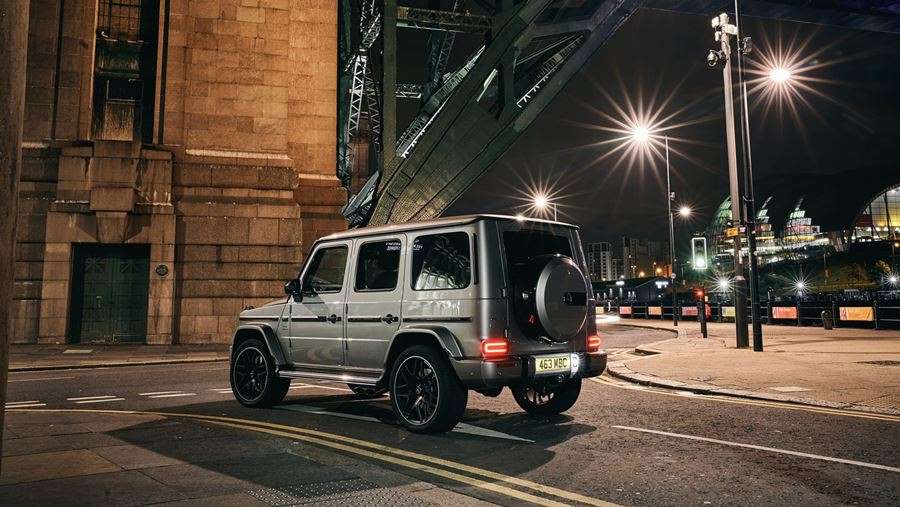
Will the new G-wagen off road like a Land Rover?
You bet. The G-Class has always been about genuine mud-plugging, as befits its ongoing military application among governments around the world. And the new one (still codenamed W463; it’s too iconic a badge to change, apparently) does more of the same.
Proper ground clearance (241mm), stubby ends for goat-like departure (30º), approach (31º) and breakover (26º) angles mean the new G-Class can scamper up the most extraordinary terrain.
The locking differentials help here, and you can adjust them on the fly at speeds of up to 30mph. You can feel each individual wheel grabbing at the ground and the low-speed transfer case means you can descend steep hills on tickover, as engine braking does its thing. It’s frankly incredible off-road – right up there with the best from Land Rover or Jeep.
Mercedes-AMG G63: verdict
There’s some truth to Guethenke’s claim that the new G is a jack-of-all-trades. It can be a viable only car – so long as you don’t mind the ostentation, the steep running costs and the image, which is part gangster-swagger, part military, part supercar slayer. It’s an extraordinarily versatile car and one gifted with that oft-forgotten automotive talent: character.
Source: carmagazine.co.uk
The hatch and convertible Mini have been restyled again
The current family of Mini models configured in the form of hatches and convertibles, from the F55 / F56 / F57 series, debuted back in 2013, only to undergo the first wrinkle tightening operation five years later. Then we got a chance to notice the British flag in the form of which the graphics of the last signal groups were made.
Although we would all think that after almost eight years, the time has come for a change of generations, that will not happen. That is why you should know that the new wave of modernization that swept the Mini brand, brought a lot of freshness to the offer, both in terms of the number and depth of improvements made.
Traditional Mini models got a new character with a large lid in the middle of a stylized air intake. The new bumpers have a flatter design, and are no longer "complemented" by fog lights, which are becoming just one of the separate functions of the main headlight groups, which now offer LEDs from the basic equipment package.
The last single groups incorporate the mentioned diodes in the same style as before, but the change is that they are part of the standard equipment package, while in the past such "feet" were paid extra. The rear center light, set to break the fog, remained in place, but is now successfully camouflaged by a transparent diffuser.
Other changes include new grilles on the front fenders, a newly developed collection of wheels with 17- or 18-inch wheels, as well as an enriched palette of available color shades for the body. However, the company is most proud of the two-tone roof and states that such an option is available for the first time in the history of the automotive industry. Of course, this refers to the vehicle that leaves the factory halls, and not to the secondary market.
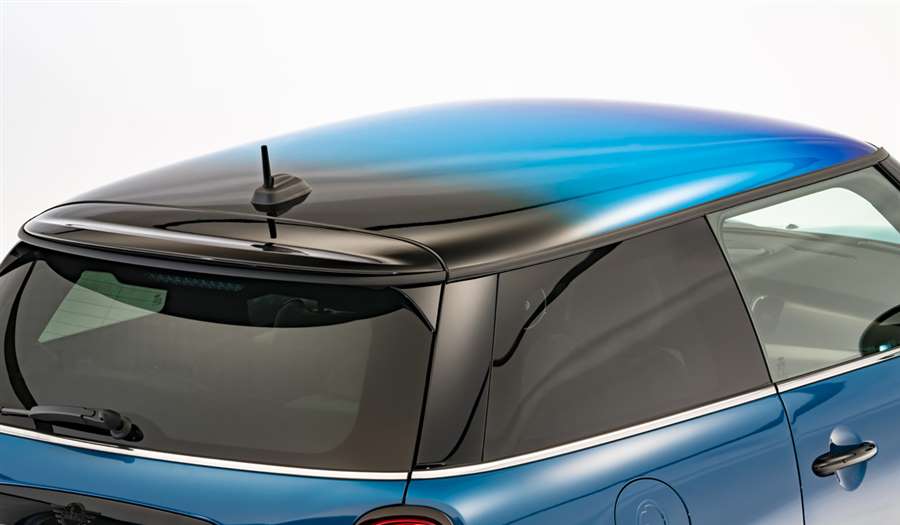
Several color combinations can be ordered in that spirit, and it is up to the buyer to express style and measure, although even the manufacturer will not allow him to show distaste, that is for sure.
There are a lot of novelties inside the little ones as well. There are different ventilation openings, steering wheel, and even a gear lever. Customers have a wider choice of combinations of available colors, materials and finishes.
An optional five-inch screen was offered instead of the instrumentation cluster even earlier, and now the graphics of the same have been improved. The infotainment system has also been redesigned, regardless of the fact that the dimensions of the monitor have remained identical, ie 8.8 inches. The new options bring a heated steering wheel as well as an electromechanical handbrake.
On this occasion, the "minis" were not left without diesel, but it happened in 2019, on the eve of the introduction of the environmental standard Euro-6d. That hasn't changed even now, so the range includes only petrol and electric models. The powertrains were not modernized during this restyling.
So, five petrol versions are offered in different countries, although only two internal combustion engines are in circulation. The turbocharged engine is offered in the following editions One First (75 hp), One (102 hp) and Cooper (136 hp), while the four-cylinder two-liter 2.0-liter is hidden on the market under the indexes: Cooper S (178 hp) and John Cooper Works . (231 hp).
The transmission can be a six-speed manual, a seven-speed automatic with a double clutch (for four versions), as well as an eight-speed automatic for the most desirable variant, the one that says John Cooper Works. The electric hatch Mini Cooper SE will continue to offer 184 horsepower and a traction battery with a capacity of 32.6 kW / h.
For Mini vehicles configured in the form of hatches or convertibles, it is planned to offer an adaptive suspension system where the shock absorber stroke is adjustable and variable. Previously, this option was "under the nose" of only buyers of the hot hatch Mini John Cooper Works. Through this restyling, a more modern adaptive cruise control has been installed, so he can now restart the vehicle after the driver has previously stopped.
Sales of the updated Mini in Europe start in March. It is best to inquire at an authorized dealer about the prices of newcomers. They are especially looking forward to every customer, which is also true for the BMW parent brand, with the bigger brother selling much better.
AutoRepublika
2021 Toyota Camry Goes All-Wheel Drive (Again)
Introduced halfway through the 2020 model year, the Toyota Camry's all-wheel-drive option makes a return after a 29-year hiatus.
The late 1980s were a halcyon era for all-wheel-drive cars. Mitsubishi made all-wheel-drive Galants, Honda had the Civic Real Time 4WD, Pontiac introduced the 6000 STE AWD, and Ford offered an all-wheel-drive Tempo. The period gave us various AWD Subarus and Audis, the BMW 325xi, and Mercedes-Benz's 4Matic system. Toyota even built an all-wheel-drive Camry, the All-Trac, from 1988 to 1991. Then the SUV craze took off, everyone bought a Ford Explorer, and all-wheel-drive cars went back to being freaky things for rally-racing fans and rich Vermonters.
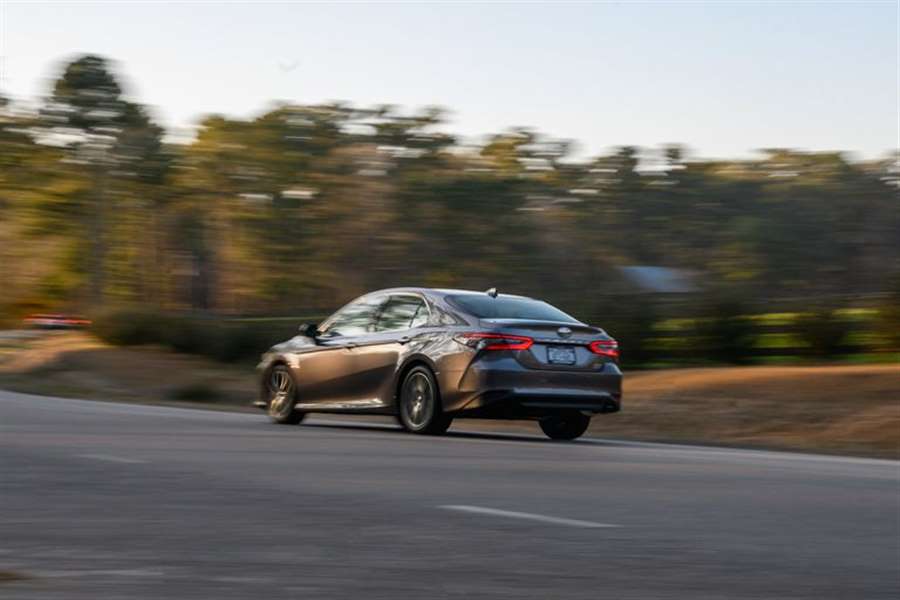
Okay, we're oversimplifying. But if SUVs and crossovers killed the mainstream all-wheel-drive sedan, we can also argue that they're the proximate cause of its current minor renaissance, since carmakers want to give their sedans a fighting chance in showrooms bursting with new utility vehicles. So, Toyota's AWD Camry has returned, this time less because of direct all-wheel-drive competition (Subaru Legacy, Nissan Altima) than to fight the more general adversary known as "all crossovers."
Toyota introduced all-wheel drive as a midyear addition to the 2020 Camry lineup, and it went into production at the company's factory in Kentucky last March. Considering what else was ramping up last March, you'll be forgiven for missing that news. Toyota figures 15 percent of Camry buyers will choose the all-wheel-drive option—which is limited to the North American market—but we predict that only a tiny subset of those will add their own All-Trac badges. That's too bad. As it stands, a subtle AWD emblem on the trunk is the only giveaway that your Camry is packing more than one differential.
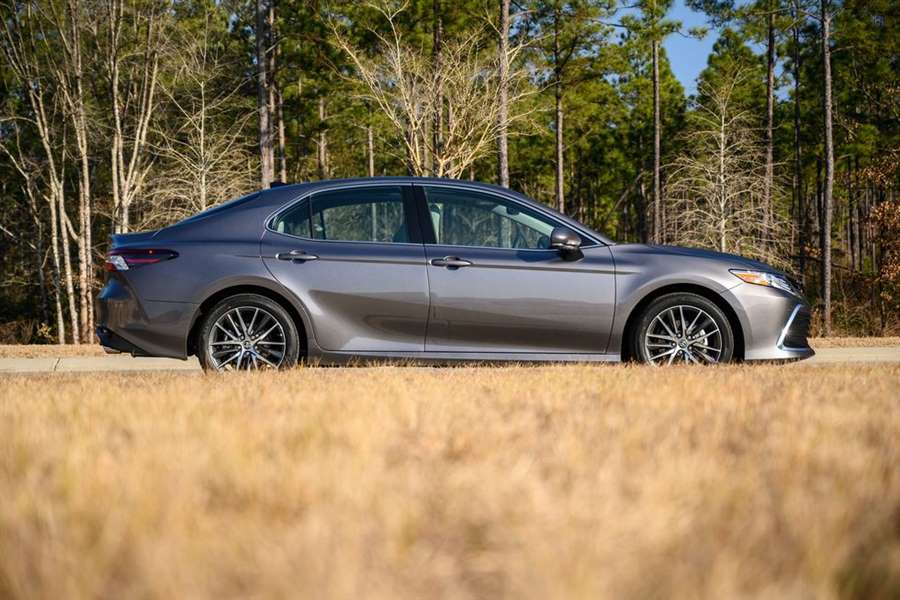
Unless, that is, you jack up the car, which we did to take a peek at that rear diff. The complete system adds roughly a claimed 165 pounds yet makes no impingement on trunk space. The rear seats lose 0.4 inch of headroom, and overall passenger volume declines by less than a cubic foot, both of which are metrics that fall under the heading of "not so you'd notice." Oddly, all-wheel-drive Camrys have a wider turning circle (39.3 feet versus 38.0 for front-drivers) because of a slightly wider rear track and different suspension geometry.
The rear-axle hardware also crowds the exhaust system a bit, resulting in the all-wheel-drive models making one horsepower fewer than their front-drive siblings. We suspect that, in a drag race, the weight penalty will make a bigger difference than the single-pony deficit.
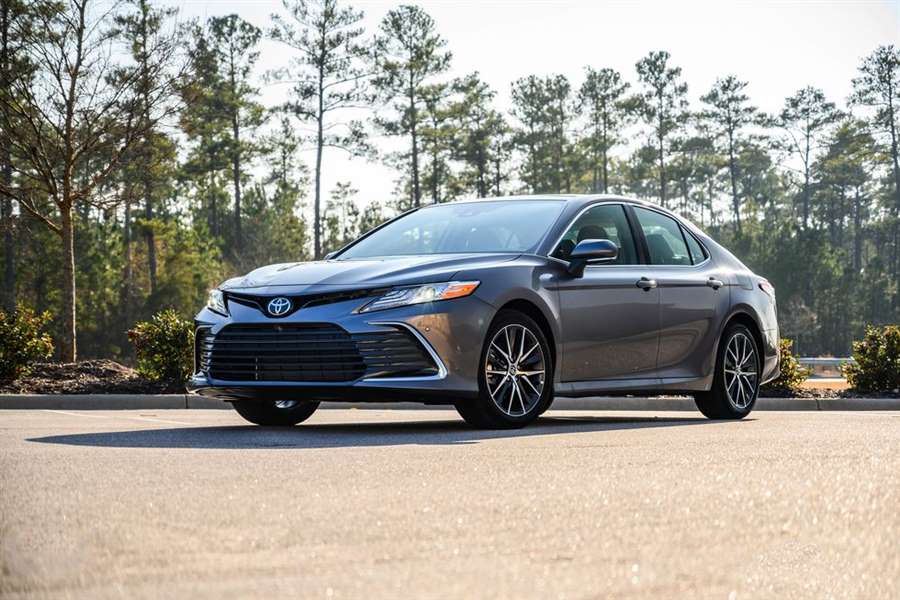
Indeed, the Camry's AWD option is available on every four-cylinder trim level, including the sportier XSE. It's not available with the optional V-6 or hybrid powertrains, presumably because if that's what you're after, Toyota would rather sell you a RAV4 or a Highlander. The naturally aspirated 2.5-liter four is reasonably powerful—202 horsepower in most trims, 205 in the XSE, which has dual exhaust outlets—if rather coarse at high rpm. At least it's hooked to an eight-speed automatic transmission, as opposed to the continuously variable transmissions found in the Camry's competitors from Nissan and Subaru. Decisive upshifts and quick downshifts add some satisfaction to the AWD Camry driving experience, although the word "fun" doesn't quite apply. A TRD hot rod this is not.
In fact, in normal operation, the all-wheel-drive Camry behaves like a front-drive model with some junk under the trunk, disengaging the rear axle via an electromagnetic coupling. When the front wheels slip (or when accelerating from a stop) the rear end shows up for work, deploying a maximum of 50 percent of the engine's available torque to the back. We didn't get a chance to test the system in snow, but on dirt the Camry hooked up and launched after a momentary hint of wheelspin from the front. Traction overrules horsepower, quickly and decisively, which is the point. This wouldn't be a great car for spinning donuts in an empty parking lot, but it should excel on sloppy winter roads.
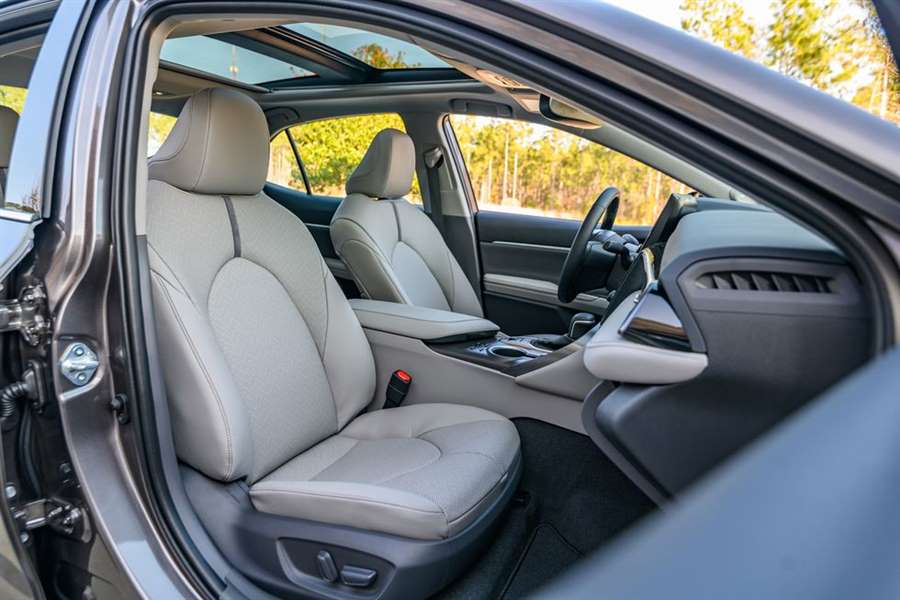
And it's a good buy. At $1400, the all-wheel-drive option doesn't cost much more than a nice set of mounted winter tires. It does exact an ongoing penalty in running costs, though, since the added weight and drag of the system drops the Camry's EPA combined estimate by 3 mpg versus comparable front-wheel-drive models. For the XLE example we drove, the EPA highway rating fell from 38 to 34 mpg, despite the Camry's ability to disconnect its rear axle. Given that Toyota stole some packaging space for the all-wheel-drive system by fitting a smaller fuel tank (14.4 gallons, down from 15.8), the Camry AWD will be visiting gas stations considerably more frequently than its front-drive counterpart.
Taken together, this amounts to a bunch of small drawbacks that you'd forget all about the moment you power up a steep hill in six inches of powder. If that's something you ever need to do in a family sedan, maybe take some inspiration from the all-weather cars of the '80s. You can't buy a new Pontiac 6000 STE, but the all-wheel-drive Toyota Camry is back.
Source: caranddriver.com
Without this solution, there is no future for diesels. Good to know what AdBlue is for?
AdBlue is a 32.5 percent aqueous solution of urea that is neither toxic nor flammable, but is highly corrosive.
This product is also known as AUS 32, which is an abbreviation of the English name for aqueous urea solution. It was developed especially for diesel engines, whose exhaust systems are equipped with selective catalytic reduction (SCR system).
AdBlue is injected into the exhaust gases in the catalytic converter of the diesel engine to reduce harmful emissions of nitrogen oxides (NOx). In this way, the emission standards for Euro 4, Euro 5 and Euro 6 can be met. By injecting the AdBlue solution into the exhaust gases, the urea contained in the ammonia (NH3) and carbon dioxide (CO2) solution is obtained.
The whole process takes place at high temperatures, at which ammonia reacts with nitrogen oxides, which are formed during the combustion of diesel. The product of this reaction is harmless nitrogen (N2) and water vapor (H2O), which come out of the exhaust. This process is called selective catalytic reduction (SCR). AdBlue is liquid up to a temperature of -11.5 degrees and can be reused without restriction if it is dissolved continuously. It is very corrosive, and must not come into contact with non-ferrous metals, various types of plastic and similar materials.
The dosing of AdBlue additive, which is stored in a separate tank, is done completely automatically in the vehicle, in accordance with the control unit. In the case of Euro 4, the amount of added AdBlue additive corresponds to about 3-4 percent of the amount of fuel consumed, while in Euro 5 it is between 5 and 7 percent.
In certain cases, AdBlue can reduce diesel consumption by up to 7 percent, which partially justifies the initial costs of mounting on a vehicle in accordance with the Euro 4 and Euro 5 norm. By comparison, about 35 new vehicles with AdBlue emit the same amount of particles as a ten-year-old vehicle without a SCR system.
Many modern diesels use AdBlue solution, which is poured into a special tank and must not be mixed with fuel. When it is used up, a new amount should be added. Although it will work without AdBlue, the engine will emit larger amounts of harmful gases, and the built-in diagnostic system (OBD)

